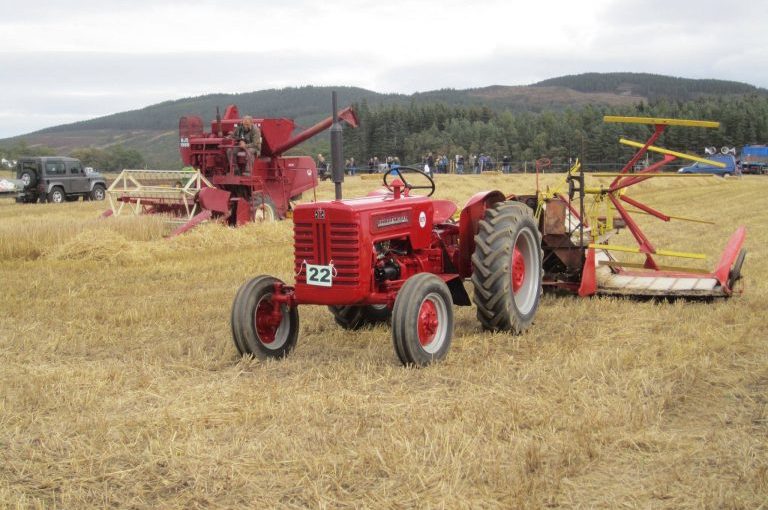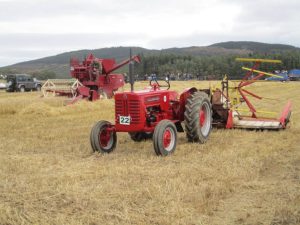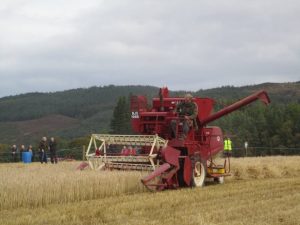While the first combine harvester in Scotland were being tried by Lord Traprain on the farm of Cairndinnis, East Lothian, in 1932, their introduction and widespread use was not a rapid one. In 1939 there were only 150 used in Britain. Production became more rapid in the second half of the 1940s. One article in the Broughty Ferry Guide and Advertiser from 1 October 1949 noted that: “It is estimated that this year 3,500 new combine-harvesters were in action, bringing the total number in use in the United Kingdom to 9,000.” It added, “Until 1945, when home production of these machines started in earnest, farmers had been dependent on machines imported from America. In the first six months of this year, home produced machines and machines imported were responsible for roughly equal contributions to the total supply; next year production of combines made in this country will show a big increase.”
During the early years of the adoption of the combine harvester there were divided views about whether the new way of harvesting the grain crop was effective and efficient and whether it harmed the grain. The following are two comments from 1944 on how the adoption of the combine harvester was being seen:
“Harvesting locally is going ahead as fast as may be. We are informed that results and performance of the new Combine Harvester are well up to expectations and that the innovation has come to stay. Some of the older farming folks are prejudiced in favour of the old methods, holding that the naturally dried grain is best. An advocate of the new method says that this is just “baloney”. I am not well enough versed in the matter to take sides.”
(From Winchburgh jottings in the West Lothian Courier (1 September 1944)
Wilkieston harvest
Harvest- there are few sights more heartening than the view from our hill these days, with so many fields rejoicing in their rows of stooks. And all the crops are of the best quality. The wheat especially was as fine as we have ever seen; its four-foot straw has stood up well to all the vagaries of our climate.
Labour-Even more than recent years, our district has seen an influx of young men and women to help in harvest work. They come from all parts, as far as Dundee and Glasgow. Maybe the Ministry of Labour acts on the old principle and send them to a place where there is “nae temptation to walk home!”. The workers seem to be quite happy in it here.
Mechanised-We have seen the new Combine Harvester at work; and a compact piece of ingenuity it is. The knives are pushed in front and they cut a 12-feet swath. To obviate too much spread, the thrasher is in the top-hamper. Yet when among the grain, the machine gives no impression of clumsiness. It is on the road that it reminds us of a swan out for a waddle!
(From Midlothian advertiser, 15 September 1944)
Do you recollect the debate around the introduction of combine harvesters or for harvesters for other crops such as potatoes?
The photographs were taken at the Strathnairn Vintage Rally, Daviot, September 2014.


